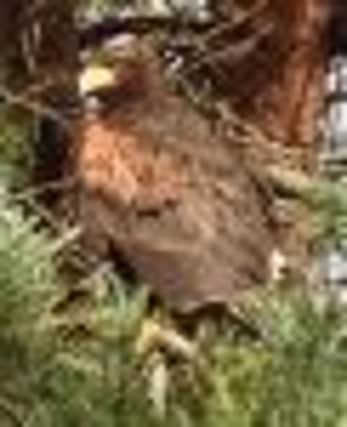Hawk eyes in the south


A member of The Extra team spotted the bird in a tree near the motorway flyover with feathers looking decidedly unruffled.
Baffled as to which species it was, we posted a snap on Facebook – and lots of you took part in the guessing game.
Advertisement
Hide AdAdvertisement
Hide AdSuggestions included a golden eagle, Harris hawk or a buzzard – and it emerged that the predator might have been spotted elsewhere in the southside too.
Facebook follower Rhona Robb commented: “My daughter saw him or his pal last Wednesday near Deaconsbank”, and Lindsay Young added: “This might be the bird we saw at Greenbank Gardens. I thought the one we saw a couple of weeks ago might be a buzzard”.
Keen to identify our feathered friend, we asked ornithology enthusiast Graham Martin, deputy editor for our sister paper, the Milngavie and Bearsden Herald.
Graham told The Extra: “I thought it was a golden eagle for a bit.
Advertisement
Hide AdAdvertisement
Hide Ad“The way it’s bunched up gives maybe a misleading impression of bulk, but the yellow in the cere (the fleshy bit on the beak) suggests a Harris’s hawk.
“They’re from North America, but are used widely in falconry and escape all the time”.
Based on our photograph, an RSPB Scotland spokeswoman said: “We believe that this is a Harris hawk, a Central American bird of prey that is not native to the UK.
“It is likely that this particular individual is an escaped captive bird which we hope is reunited with its owner soon”.
Advertisement
Hide AdAdvertisement
Hide AdThe Harris hawk (or Harris’s hawk) can range in length from 46 to 76cm, and has a wingspan of up to 1.1m.
Originating from the southwestern United States and into South America, the species is often reported at large across Europe, particularly in Britain.
It is the most popular hawk for falconry use, because it is easy to train and of sociable nature – sightings in the wild are attributed to falconry escapees.
The Harris hawk’s diet includes birds, small mammals, large insects and lizards (although we suspect there are few of the latter in the cooler climate of Pollokshields).